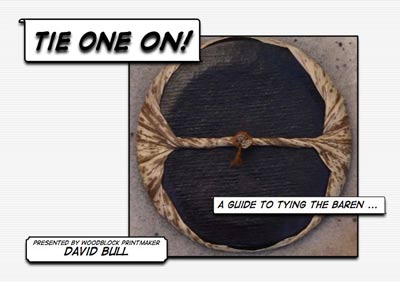Posted by Dave Bull at 2:22 AM, May 24, 2012 [Permalink]
The main job today was working out the colour separations for this print. I think there will be four pieces of wood, using both sides of course, and some of the faces having multiple 'zones'. I think there will perhaps be about 14 or 15 impressions in all.
Here are the kyogo-zuri, the sheets printed from the keyblock on which I have coloured in the appropriate zones for each colour block.
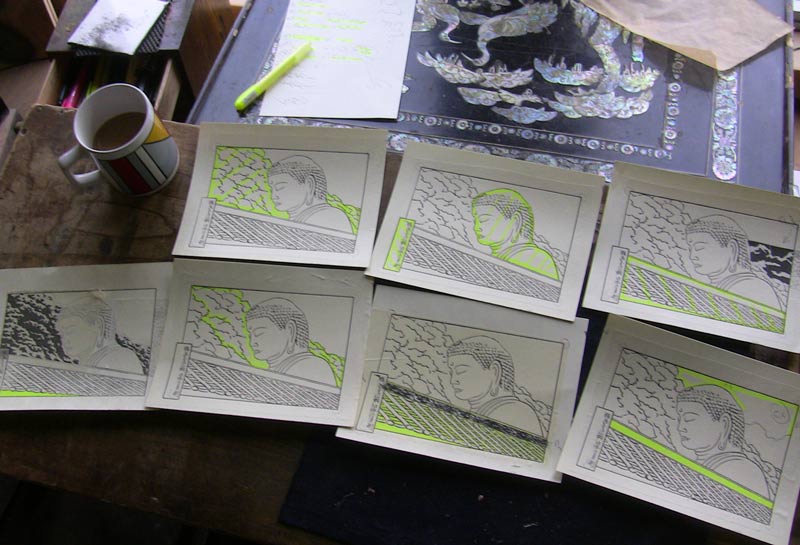
The tea cup is a 'placeholder' for the eighth sheet, which isn't worked out yet. This will be the shadows on the face of the statue, and getting those right is not going to be a trivial task. So as usual ... 'later'!
Over on the Mokuhankan Conversations blog today, there is a post showing this morning's work - together with new trainee Ayumi-san. We had the Webcam running, and I also recorded part of the session. The final segment of that video - which you can see on the Conversations page - shows me pasting down one of these kyogo sheets.

Before I started work this morning, I had been out for a morning stroll, and noticed something interesting, so I zipped home to pick up my camera ... See the white house in the distance? That's my place. The white barriers on the side of the road are necessary because the land falls away steeply to the river in these areas.
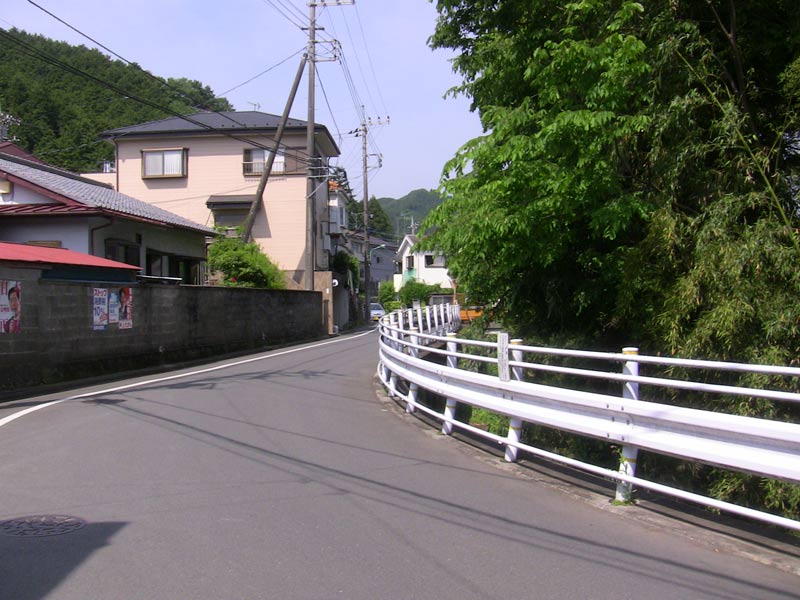
If we turn the view to the right, and look over the barrier, we see this:
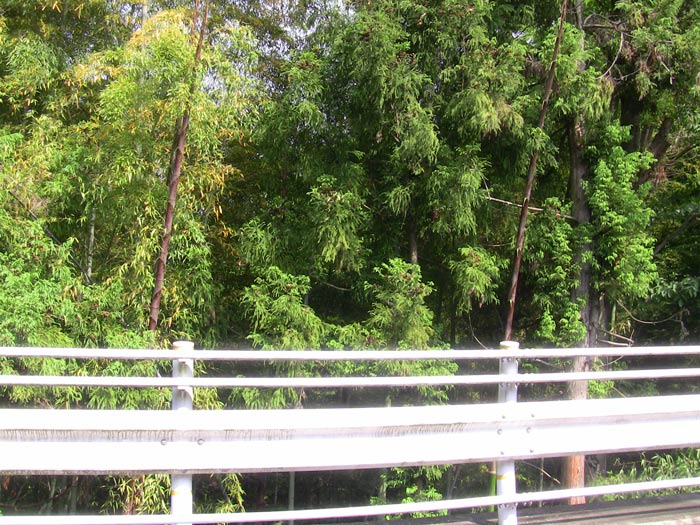
A bamboo grove. A bamboo grove in early summer. And early summer is when it shoots up like crazy, dropping sheaths as it goes ... Here's a stem shooting up, still sheathed at the top, but with one just splitting off and getting ready to drop ..
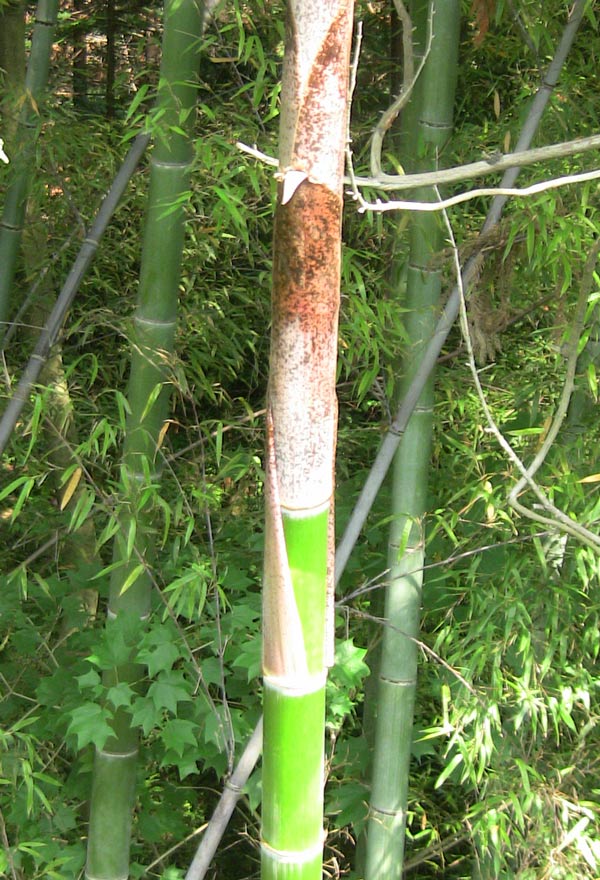
Here's a cluster where the sheaths haven't quite separated ...
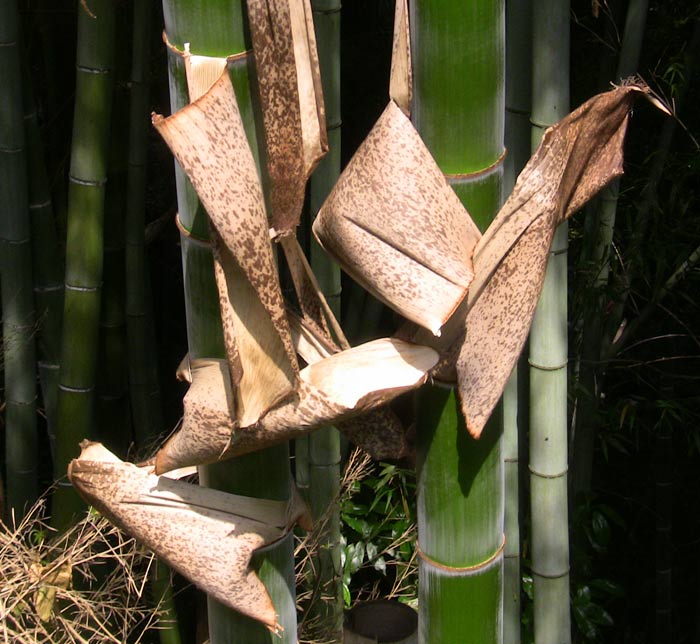
For a woodblock printmaker, this is 'prime time'! Now I have to be a bit careful here ... [Note to my mother, who reads this blog sometimes ... just skip this next part, OK? Go get a cup of tea or something ...]
... I have to be careful because this cluster of bamboo is growing right at the very edge of the drop-off, and it's a very long way down! (But it would only really be dangerous for somebody who didn't know what to expect - suddenly stepping out into thin air.) I climbed over the railing, gingerly entered the grove, and gathered a few of the sheaths ...
I lived to tell the story, but unfortunately, it doesn't have a happy ending! This is a clump of the type of bamboo known as madake (timber bamboo), and that is one very heavy-weight plant. The sheaths are extremely thick and dense.
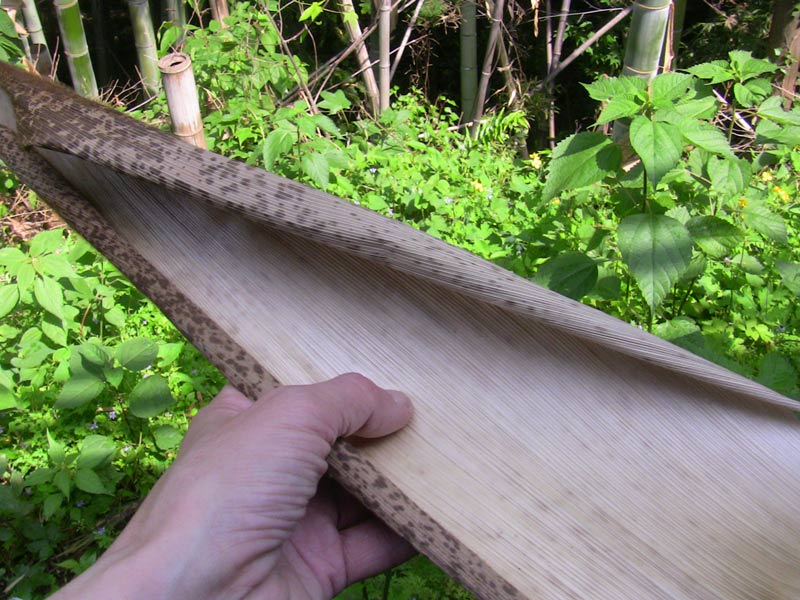
I took some home, thinking that perhaps they would be useful for practicing at least, but no way - they are far too thick. These are totally unuseable.
Too bad! At the price I'm paying for these recently, this would have been a real gold mine!

